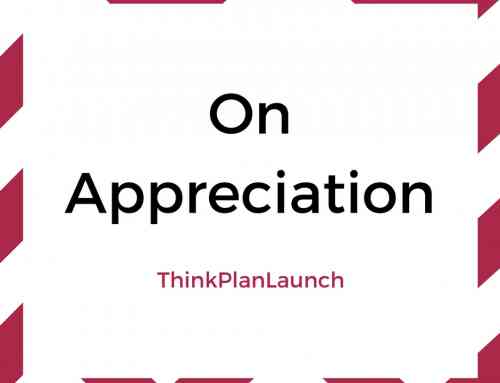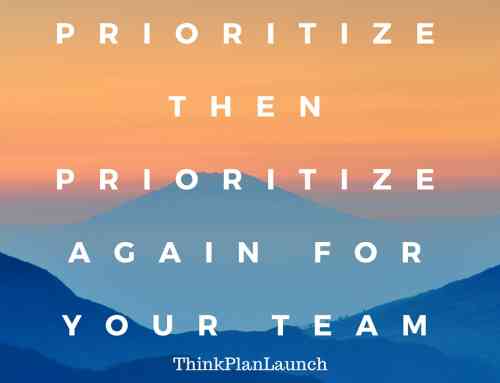The High-D stands for “Dominant” as explained in detail in one of our previous posts. It is one of the four types of behavioral styles that can be identified in a DISC assessment. Specifically, measuring the magnitude of this trait in a person requires looking into how one approaches and responds to challenges and exercises power. High-Ds can be effective leaders who accomplish organizational goals due to the nature of their behavior. However, don’t be mistaken to believe that only High-Ds are good leaders or that all High-Ds should be leaders. In this DISC series we look into leadership skills for the High-D that will make them effective as a manager or other leadership position.
For a leader who is a High-D, there are a number of traits which are advantageous. Ambitious, pioneering, determined, decisive, and competitive, a High-D leader is driven to complete tasks and goals. This focus can help an organization execute its strategy. The most satisfying activity is checking off a challenging to-do list. As a person of responsibility, only results matter to the High-D. A leader who is a High-D will do anything to win and achieve success. In that push for results, there are many disadvantages as well. High-Ds can be seen as demanding, egocentric, aggressive, and forceful, which can hurt their ability to influence and motivate their team. Even worse, is when the behavior types of their team members are vastly differently. This can lead to frustration for the leader and the team as their behavior and communication styles clash. It is this very reason why DISC assessments for the entire team is essential for improving communication between managers and team members. Each behavior style requires a different approach in communication which we will briefly look at. If you don’t know your behavior style try our free assessment.
Table of Contents
High-Ds are innovative but need restraint
High-D leaders are very creative in their ability to accomplish goals. For them, everything is on the table if it means delivering results. Anything on hand becomes a potential tool and because of this, resource management is particularly important for the High-D. Efficiency and calculation, while important to the High-D, might not be of particular importance when they need to see things through immediately. Time is of crucial importance to the High-D but other resources might not be. Imagine a High-D needs to open a bottle, but a bottle opener is unavailable. Does the High-D give up? Never. Does the High-D run to the corner ripoff-convenience store and buy a bottle opener at an exorbitant price to save time. Highly likely. Does the High-D take out his $1000 smartphone and use it to pry open the bottle? Let’s hope not, but don’t be surprised.
For an organization, resource management is of extreme importance. For this very reason, the High-D leader must take care when utilizing financial and human resources. The temptation to turn the notch to 10 is a reality that needs special attention. High-Ds are ambitious in their plans and visions. The High-D must set artificial restraints such as budgets and deadlines. If their goals require too many resources, then a rethinking the idea is a must. It is too easy to get carried away and bet the company on something that might not pan out.
In addition to appropriate budgets and deadlines, the High-D should also make it routine to include team members in planning meetings and get their input. It is all too easy for the High-D to assume that team members are fully capable of handling any task thrown at them. To them, anyone who isn’t able to complete a “not impossible” task is purely lazy or unintelligent. Estimation and prioritization efforts must be made when considering the human element. How long a person needs to accomplish a task and which tasks are the most important should become important deciding factors. If the High-D were left to their own resources, brute force and coercion would represent the extremes of their behavior, but as we know, slavery is thankfully outlawed. Kidding aside, the High-D must hone their listening skills so that planning and strategy are more effective. Taking a reality check is a must.
Effective communication for High-Ds
High-Ds naturally want to drive the conversation. They become a one-way communicator. They are great at communicating the main points in an objective way and bring focus and relevance to a conversation. They waste little time and stay on topic. Anything else added to the conversation is excessive and wasteful and they cannot tolerate it. When tight deadlines are looming, High-Ds can drive a team with high speed. While this might always sound positive, this could also be a sticking point for the rest of the team who may be of other behavior types. High-Ss and High-Is are people-orientated and not task-orientated. Because of this, it is easy for the High D to ignore relationship-building within the team. A High-D must remember to facilitate communication within the team. While it might seem trivial or a waste of time, it is important for team members to be given the opportunity, if they want, to forge relationships in the team. Building comfort and familiarity in a team allows people of different behavior types to communicate without barriers. The High-Ds of a team will only communicate when necessary, which could be too late, whereas the rest of the team might spend time chit-chatting which could come across as wasteful. But devoting energy early to allow people of different behavior types to communicate, a team can be prepared for highly effective conversations inside and outside the meeting room.
Since High-Ds come across as excessively demanding, they must develop self-awareness so that when they are talking, they understand how they look to the other person. Communication is a two-way street. Naturally, a High-D will only want to speak of issues relevant to the goals. This hyper-focus on short-term goals might seem appropriate, but other issues that might be relevant to the organization could go unheard making long term goals more difficult to achieve. The High-D must take great care in ensuring that all issues are heard. As leader, they have the responsibility to keep an ear out for the organization rather than their own personal goals. Neglecting other issues could be detrimental to the organization.
Anger management is a High-D necessity
High-Ds are prone to a short fuse. As a leader, it is disastrous for the High-D to show anger. It breaks down communication and causes stress for other individuals. The hostile environment that a High-D can create leads to low productivity and turnover. Managing anger is not an easy task, but will lead to more positive results. Leaders require a high level of self control for them to exert influence over others.
Things not going to plan is very frustrating for the High-D. What makes it worse, is when human error causes plans to fall through. Those involved can easier become targets for the High-D manager who is keen to vent frustrations. An effective High-D leader must realize that the human component of a plan is not perfect. Estimates of human output are just that. Estimates. Instead of devoting time to reprimanding others for failures, an effective High-D leader should focus on making planning and execution better.
Communication problems need to be addressed, employees need to be trained, and plans need to be done more thoroughly. While it is in the nature for the High-D to attack others, a bit more thought should be devoted to revealing the underlying issues before conclusions can be drawn.
Impatience is also another issue that High-Ds can struggle with. In the pursuit for results, anything that threatens to delay the deliverance of objectives falls into the crosshairs of the High-D. Going back to the human component, the High-D needs to be reminded that the performance of others are affected by multiple variables, including those outside the office. When someone becomes sick and cannot come to the office, the natural tendency for the High-D is to downplay the illness and become frustrated with the lack of duty. This output is usually from the highest of Ds, but it during times of stress, normal High-Ds will exhibit this kind of behavior.
Relaxation techniques, breathing exercises, and frequent breaks become very useful for the High-D under stress. When anger and impatience is left unchecked, it will lead the team to disaster. Emotional outbursts need to be limited.
Risk tolerance
Risk is seems to be a High-Ds best friend. The High-D engages in risky behavior often. Playing it safe is not on the menu. There is incredible value to taking risks, but, of course, the penalties for failure often come high. As a High-D leader, the opportunity to deliver results spectacularly is one not to miss. Decision-making becomes influenced by a lust for success. Unfortunately for the High-D, people of other behavior types are not very fond of the “bet the company” approach. Particularly, the High-C is wary of any approaches that are of high risk. The threat to company or team means that job security is also at threat.
For the High-D leader, risk-taking needs to be communicated more methodically. Members of the team may or may not be thrilled to hear of any news of riskful actions and because of this, the High-D will need to focus on presenting plans with all details and supporting evidence to satisfy the team. Failure to do so could result in rebellion or a lack compliance. The days of “do as you’re told” are long gone.
Setting goals
A more calculating High-C would be amazed by the goal setting behavior of the High-D. For the High-D, there is no goal that is out of reach. The goals list themselves become long, ambitious, and risky. It sets up the team for on an arduous path that is full of changes of plans and unique challenges.
More importantly for the High-D, is that many often do not write their goals down. Many goals are kept within the mind of the High-D leader and communication becomes much harder when there are more topics to discuss and little organization to benefit from.
What is also not clear for a team under a High-D is what options are available for the team to complete a task. For the High-D, almost any action can be justified if it completes a goal. However, for the team members, it is unclear what resources can be used and because of this, there is a lot of stress developed when trying to determine what they can and can’t do. There are no boundaries set and it becomes necessary for them to repeatedly ask their leader for clearance.
A High-D leader must write down goals for the entire team to review and clearly outline what procedures must take place. A High-D is driven for efficiency, but the entanglements associated from being unorganized will make it difficult. It helps for new managers of the High-D style to develop vital planning skills.
The bottomline for High-Ds
These steps will make the High-D a better leader and more approachable and effective:
1. Know your authority for yourself and your team
Overstepping your authority and not setting limits for your team will cause significant problems for your organization.
2. Refrain from being too direct
Softening words will make communication with subordinates more palatable.
3. Develop patience with others
Give yourself time to relax and calm down before making big decisions.
4. Don’t try to debate every single issue
The world isn’t out to get you. Other people have good views and their input shouldn’t be taken as a threat to your authority or expertise.
5. Listen
This is something the High-D has difficulty with and is a major impairment.
6. Limit tasks to high priority items
The High-D naturally sets too many goals. Pick and choose the top ones.
7. Lead people
Continue to hone leadership skills. Don’t force others.
8. Develop tact and diplomacy
This is something that every leader needs to do, but is a particular challenge for the High-D.
9. Lighten up
Life is short. Have fun with the team. Get to know them. Become more of a people person.




Leave A Comment